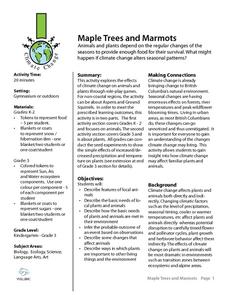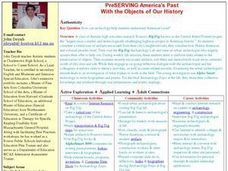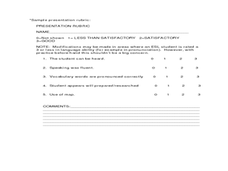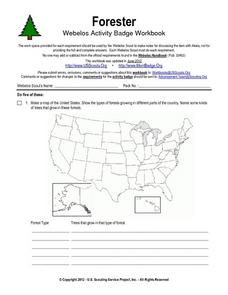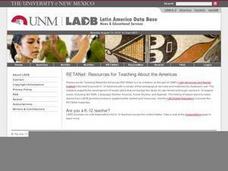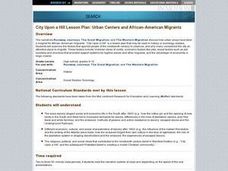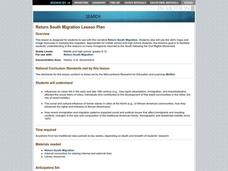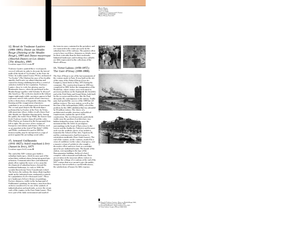Library of Congress
Industrial Revolution
Could you live without your phone? What about cars, steel, or clothing? Class groups collaborate to produce presentations that argue that either the telephone, the gramophone, the automobile, the textile industry, or the steel...
University of Wisconsin
Rain Garden Species Selection
The activity really comes to life within its intended unit on starting a rain garden. Working in groups, participants research native plants and coordinate them with the conditions in the designated garden area. Give the class access to...
Alabama Department of Archives and History
Alabama's 1901 Constitution
"We, the People of the State of Alabama. . ." Did you know that the Alabama State Constitution has 357,157 words while the US Constitution has only 4,400? And that it has 798 amendments while the US Constitution has...
Alabama Department of Archives and History
Nellie Bly to Dr. Peter Bryce: 19th Century Asylum Reform
What kind of treatment could a patient expect in an asylum during the 1800's? The abusive and neglectful conditions in 19th century asylums are the focus of a lesson that examines the work of reformers Nellie Bly, Dorothea Dix, and...
Wild BC
Maple Trees and Marmots
Kinesthetic activities simulate animal activity as the seasons progress in a lesson that introduces climate change to primary pupils. The kids role-play maple trees collecting what they need to survive, but as each year comes...
University of Wisconsin
Why Did the Triangle Fire Occur?
An investigation of the 1911 New York City Triangle Shirtwaist Factory fire leads class members to examine primary and secondary source materials related to the event and apply what they learn about the working conditions at the time to...
Roy Rosenzweig Center for History and New Media
The Homestead Act
To understand how the Homestead Act of 1862 changed the US and the lives of the people during that time, class members examine primary source materials including letters, broadsides, and images. They then assume the voice of a...
Curated OER
Examine the Trees in Your Community Forest
Twelfth graders examine selected tree species. In this tree activity, 12th graders examine twenty selected tree species, identify them, and correctly map out the trees in the area.
Curated OER
Mobility: A Green City, Past, Present, and Future
Middle schoolers explore transportation systems through history. In this transportation lesson, students determine how modes of transportation affect quality of life and design transportation plans for cities.
Curated OER
Wellington Fault Field Trip
Students take a field trip to Harcourt Park in California to view the results of river erosion and an active fault line. In this science lesson plan, students go to different parts of the park to discuss the results.
Curated OER
Social Studies: Exploring Boston's Big Dig
Young scholars, in a high school class for autistic children, take a virtual tour of Boston's "Big Dig" and the artifacts discovered there. During weekly lab sessions, they discover the processes involved in artifact preservation. ...
Curated OER
South American Architecture
Seventh graders review and discuss what they read about North American architecture. They then study images of North and south American architecture and make comparisons
Curated OER
Places in My World
Second graders explore where they are located on the globe. In this maps and globes lesson, 2nd graders use a map to show where they live and show the cardinal directions. Students identify characteristics of mountains, flat land,...
Curated OER
Forester
In this forester worksheet, students illustrate a map that shows the types of forests growing in various parts of the country. They also identify six forest trees common to the area where they live and explain how both wildlife and...
Curated OER
Urbanization in the Amazon Basin: Can Indigenous People Survive?
Students investigate the relationship between economic development and social change of indigenous peoples.
Curated OER
City Upon a Hill: Urban Centers and African-American Migrants
Young scholars examine why fugitive slaves migrated to cities and towns rather than rural areas. In this instructional activity, students consider the social, economic, and political benefits provided by cities and towns in comparison to...
Curated OER
Urban Treasure Hunt
Fourth graders use clues, and a photo, to find the location of a building in Illinois. They then take a present picture and create a powerpoint presentation to compare past and present features
Curated OER
Street/Urban Games
Students research and appreciate non-traditional games and activities that were played (and are still played) in our inner cities. They give presentations on stick ball, handball, off the wall, and stoop ball and invent their own game...
Curated OER
Lesson Plan on World War II: Illinois Role-The 33rd Infantry Division
Students complete several creative writing assignments regarding the 33rd Infantry Division of Illinois, which was active during World War II. They discuss how this war brought about changes in the state of Illinois and specifically,...
Curated OER
The Cost of Community Services
Young scholars identify the types of services provided to citizens by local government and evaluate tax revenue versus the costs of delivering these services to developments. They evaluate the advantages of spatial relations to delivery...
Curated OER
Return South Migration Lesson Plan
Students study the reasons so many immigrants returned to the South following the Civil Rights Movement. They examine how the former slaves influenced the cultural life in the Northern cities.
Curated OER
Planning a Healthy City
Ninth graders create a scaled model city. They create a blueprint that provides for the economic and cultural needs of a community. They identify where essential elements of the city should be located and explain the rationale for the...
Curated OER
Country Mouse, City Mouse?
Students recognize the characteristics of a rural area. They analyze land use to determine whether the map is of a rural (country) area or an urban (city) area.
Curated OER
Paris, a XIXth- Century City
Learners plan a visit to Musse d'Orsay to examine Paris in the 19th century. In this visual arts instructional activity, students explore the Haussmanian period and urban life in the 19th century. Learners discuss the...
Other popular searches
- Teaching Urban Planning
- Urban Planning Studies
- Urban Planning Maya
- Urban Planning Modern
- Urban Planning Mayan
- Urban Planning Canada
- Urban Planning Lesson






